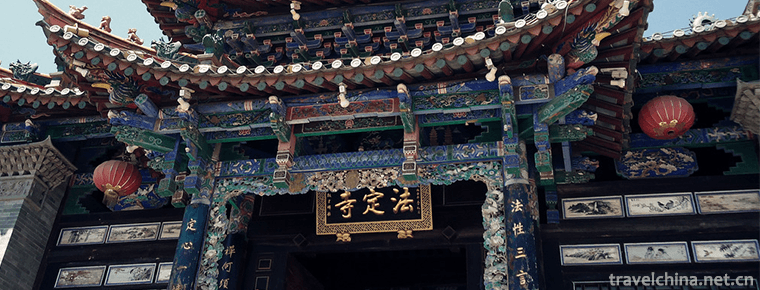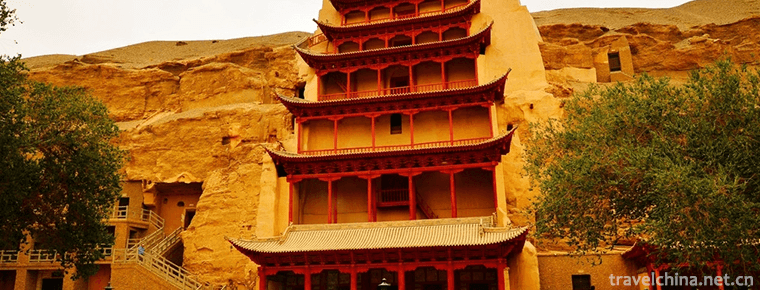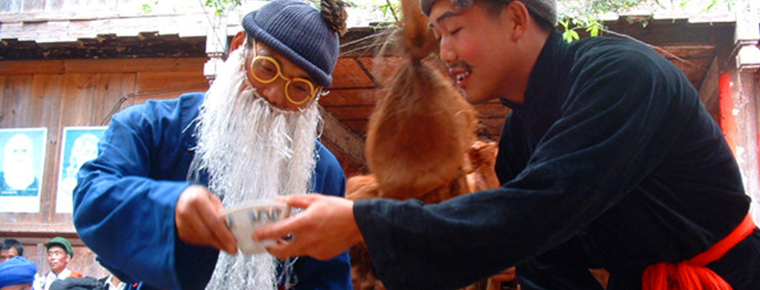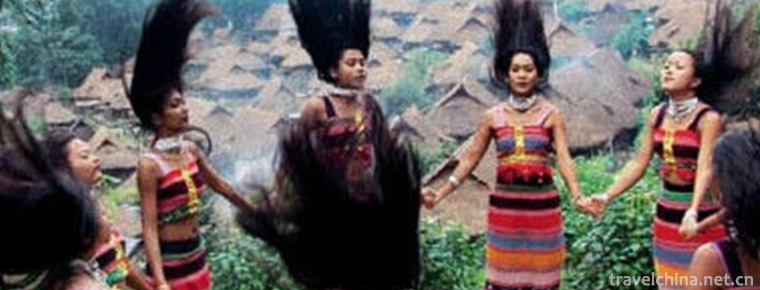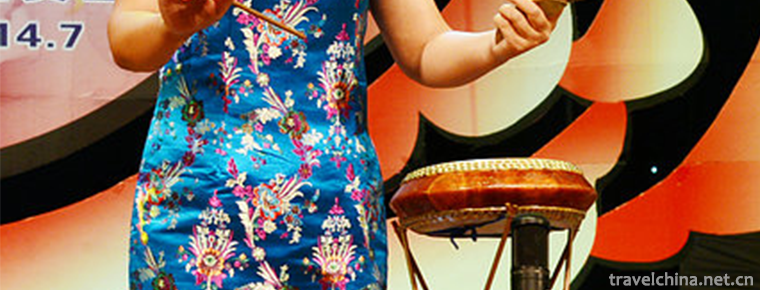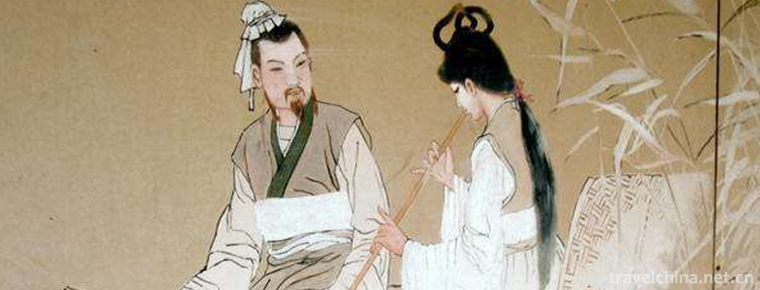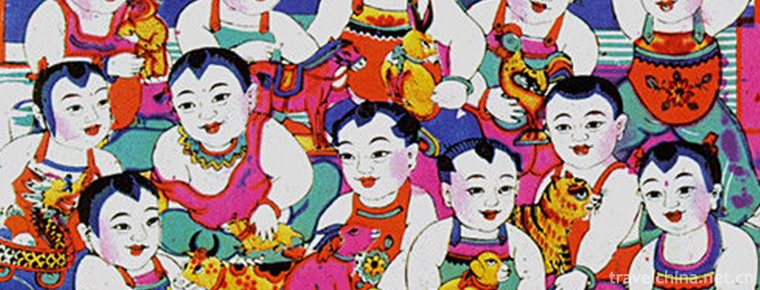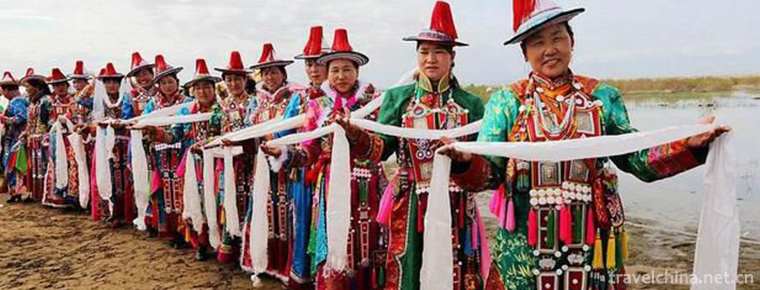Folk embroidery
Folk embroidery
Folk embroidery is a traditional Chinese handicraft, which integrates traditional folk art, folklore knowledge and traditional handicraft. It has high ornamental value, practical value and collection value. Over the past three thousand years, through successive generations of folk artists'inheritance, continuation and continuous innovation, gradually formed its own unique style and complete system.
Folk embroidery heritage includes Gaoping embroidery, Ma Liu embroidery, Western Qin embroidery, Chengcheng embroidery, Hongan embroidery and Yangxin cloth paste. On June 14, 2008, it was selected as the second batch of national intangible cultural heritage list. Heritage number: _-77.
Historical origin
"Folk embroidery" is our traditional folk handicraft.
In the Han Dynasty, there was a custom of painting tigers on New Year's Eve in China, which was the first time for Chinese folk New Year's pictures. Later, the folk custom of painting tigers to ward off evil spirits has become a tradition among the people. After a long time and rich cultural filling, the image of tiger has been simplified and symbolized: exorcism and praying, which is the folk implication of the image of tiger.
Embroidered insoles are authentic folk embroidery, with a long history, which began in the Guangwu period of the Eastern Han Dynasty, flourished in the Tang Dynasty and flourished in the Qing Dynasty. It is a folk craft with a long history in Eastern Hubei, which integrates daily use and aesthetics, and is a folk female worker's skill with regional representation in Eastern Hubei. She is well-known both at home and abroad for her brilliant artistic features, rich cultural connotations and various practical values, and is favored by experts and scholars in the field of literature and art.
Inheritance significance
The artistic characteristics of embroidery are bright colour and strong contrast. It has local characteristics in colour collocation. Black, blue, red, purple, or light blue, gold and silver are generally used as the main colours. In the long-term practice, a set of intuitive and unified color matching rules are summarized, in order to enhance decoration in the way of expression. As a result, the content of embroidery is often boldly exaggerated and deformed, without seeking resemblance, paying attention to appearance and full composition, which is in line with the expressive techniques and aesthetic connotations of traditional Chinese art. The long history and rich content of embroidery are of positive significance to the supplement and perfection of the history of Chinese folk art.
Manufacturing process
After pasting scraper, pasting upper, blanking, scraping upper cloth, polishing sole, covering sole, design (cut sample), sticky pattern, embroidery, along the shoe mouth, rolling edge, rolling edge and other processes. The patterns chosen or designed are generally propitious and safe.
The traditional folk embroidery in Huai'an City is mainly made of tiger-head shoes. There are also other styles, such as goldfish-shaped, lotus-shaped, rabbit-shaped moon worship, longevity zigzag, tiger-head pillow, tiger-head cap and so on. Cotton wool fabric is the main material.
Yangxin cloth patterning pattern has a wide range of materials and rich connotations. Birds and animals, flowers and trees, daily necessities, myths and legends, folk tales can be included in the picture. The main characters in the pattern are Guanyin, Luohan, fairies, children, etc. The main animals are Phoenix, Tiger, Kirin, carp, butterfly, bat, magpie, etc. The main plants are lotus, peach, plum flower, pomegranate, peony, golden melon, etc. The other objects are vases, flower baskets, Ruyi, Bagua, etc. Each pattern uses metaphor, homonym, analogy and other techniques to express certain implications. For example, tigers are used to alleviate evil spirits and dispel disasters, gourds are used to express "fortune", magpies and copper coins are used to express "joy in front of us", and pomegranates are used to express many offspring and grandchildren, etc. Patterns are exaggerated and deformed. They only seek to resemble gods. The shapes of objects are primitive and childish. The colors are strongly contrasted. The combination constitutes freedom and uninhibited. The theme is romantic and auspicious. The overall style is simple, rough, open-minded, free and easy, and full of local flavor. Because Yang belongs to Chu in the Neo-ancient times, Chu culture in cloth pasting has obvious characteristics, such as red and black cloth pasting background, and various Phoenix patterns, which are all related to the tradition of Chu people worshipping phoenix, red and black.
Although the composition of Yangxin cloth paste is complex, its theme is very distinct. Generally speaking, the theme of performance is festivity, auspiciousness and blessing. But the subtle distinction, its theme is also varied, mainly carp leaping dragon gate, lion rolling embroidery ball, golden thread hanging gourd, Phoenix wearing peony, tiger You Ping'an, magpie climbing plum, fish play lotus lotus, durian Kaibaizi, Guanyin sitting lotus, Tiannu scattered flowers and so on. A few cloth stickers are directly embroidered with Chinese characters, such as "good luck", "full of gold and jade", "rich flowers" and so on. Generally, each set of cloth stickers expresses a theme, or prays for a happy life, or wishes for a happy marriage, or implies the reproduction of future generations, or hopes that future generations will soon become successful and so on. These themes reflect the people's desire for happiness and happiness in Yangxin.
The basic characteristics of Chengcheng embroidery are exquisite needlework, simple and generous flower lines, harmonious color matching atmosphere, fantastic and rich imagination, full composition, no big red and green rendering, but elegant and moderate, elegant and vigorous, lively and vivid, with a wide range of decorative themes, needle thread and color matching, in order to serve the needs of various themes.
Embroidery with special features
Gaoping Embroidery
Declaration area: Gaoping City, Shanxi Province
Gaoping embroidery is one of the traditional folk arts and crafts in Gaoping City. It inherits the development of Gaoping civilization and is closely related to the costume culture and living customs of Gaoping people. It is a wonderful flower in traditional folk art gardens in Gaoping City.
Gaoping embroidery has a long history, and there are still remains, which can be traced back to the mid-Ming Dynasty according to expert textual research. Gaoping embroidery can be divided into silk thread embroidery and cloth paste embroidery. Silk embroidery includes flat needle embroidery, seed-beating embroidery, Pan-Gold embroidery and gilded embroidery. Flat needle embroidery is the most expressive, seed-beating embroidery is strong and wear-resistant, Pan-Gold embroidery, gilded embroidery makes the picture look magnificent.
Embroidery is different. The remaining colorful cloth heads are good materials for embroidery. When making cloth heads, they are cut into figures, animals, flowers, plants and other shapes according to the design requirements. Then they are stacked on the bottom and embroidered with lock edges. The finished products are simple, generous and colorful.
In 2006, "Gaoping Embroidery" was announced as "the first provincial intangible cultural heritage in Shanxi Province".
Chengcheng embroidery
Declaration area: Chengcheng County, Shaanxi Province
Chengcheng embroidery is a traditional folk handicraft art with ornamental and practical value. While beautifying life, she also imperceptibly cultivates people's sentiments, and is widely used in various traditional folk activities, such as production, life, marriage, funeral, festival sacrifices and so on. She carries a heavy traditional culture and life concept, which has a long history of thousands of years and is a precious intangible cultural heritage.
Chengcheng County in the northeast of Guanzhong Plain is the birthplace of this traditional folk art. Since the Qin and Han Dynasties, there have been counties in Chengcheng County, where ravines are vertical and horizontal, grazing is suitable for farming, and the common people live a farm life of man-farming and woman-weaving. The simple folk style here, Chengcheng people are called "Chengcheng elder brother", is a manifestation of Chengcheng people's moral character, and the precipitation of agricultural cultivation history is the product of Chengcheng embroidery. Health and development provide fertile soil, but also to Chengcheng embroidery with a deep brand of farming civilization.
There are many kinds of embroidery in Chengcheng embroidery, which can be divided into more than 40 kinds according to their functions. There are more than ten kinds of pillow top, quilt cover, insole, apron and so on. Walking into an ordinary family in Chengcheng, you will find that it is like walking into a palace of folk art. Embroidered on pillow top and quilt surface, you can't catch your eyes because of the "beautiful moon" and "auspicious dragon and phoenix", embroidered on apron and letter insert, the "wind wears peony" and the Four Seasons flower sketch. If you are lucky, the dowry of the previous years embroidered with the shoulders of "fish play lotus" and the wrapped stomach of "fish lotus turn into dolls". Pines, cypress and cranes, which imply the longevity of the elderly, are the "five sons" embroidered for the hope of their son's growing up, and the "official plus official" horse clip to protect the healthy growth of their grandchildren and grandchildren.
Hongan embroidery
Declaration area: Hongan County, Hubei Province
Hongan embroidery is a traditional folk embroidery art popular in Hongan area of Hubei Province, with socks embroidered insoles as a prominent representative. According to legend, Hongan embroidery began in the Han Dynasty, better than the Ming and Qing Dynasties. In Hong'an, socks embroidered insoles are not only a common life utility, but also a folk art with special significance. Women use it as a platform to show their talents, as gifts for social exchanges and as a token of love. Hongan embroidery involves a series of activities, such as embroidery, communication, exhibition, gift, and so on. It has greatly stimulated the enthusiasm of the people to participate in the production.
Yangxin cloth sticker
Declaration area: Yangxin County, Hubei Province
Cloth stickers, also known as patches, are a form of embroidery. It makes use of the remaining corner debris of the quilt, carefully collages the colorful patterns on the black or dark blue fabric undercloth, pastes them firmly with paste, and then latches the embroidery along the edge with needles and threads.
Yangxingu belongs to Chu. It was founded in 201BC. Yangxin is the central area of "cloth pasting culture". Although there is no text to study, it is often found in unearthed cultural relics. Below are the Jingchu relics of 1000 years ago on display in the Capital Museum - cloth stickers and embroidery.
It is used for decorating clothes, shoes, hats, shawls and other wear and curtain edges, ribbons, cloth pillows and children's play. Most of the rural girls in Yangxin District of southeastern Hubei are married with a chic "cloth corner bag" which contains all kinds of remaining cloth heads when sewing dowry. After the door, sewing clothes and stickers, skirts, salivary pockets, shoes and hats for the unborn baby seldom costs money, and the work is beautiful, strong and wear-resistant. Yangxin cloth sticker presents the color characteristics of black lacquer and gold dots. Its shape is wild and plain, its composition is romantic, regardless of time and space, heaven and earth, unconventional and random combination. In the production of elaborate embroidery, many patterns, forming a rich system, from crown to footwear, from children's clothes to toys, from bride's wedding supplies to women's household, as well as temples, cattails, etc., practical items up to 5 series of more than 30 varieties, dazzling, beautiful. The works are mostly based on traditional folk stories, opera characters, folk customs and rural scenery, such as Guanyin Sitting Lotus, Fengxi Peony, Fushou Babao, Golden Rooster Carp, Peach-pomegranate Tea Orchid, etc. There are also daily life, crops, mountains, forests and rivers, and so on. There is no need for a spectrum book, no need for a pen, no need for mental imagery, no difference from hand to hand.
At the age of 12 or 13, girls in Yangxin countryside began to sew by collage under the guidance of their elders. When they get married, they will put the remaining corners of their wedding clothes into the "corners bag" and take them to their mother-in-law's house. When they are happy, they will make all kinds of beautiful cloth stickers. In the family of relatives and friends, children can also be given as gifts when they do festive things such as full moon, birthday and so on.
Maliu embroidery
Declaration area: Guangyuan City, Sichuan Province
Maliu embroidery is a general term of embroidery spread in Chaotian District, Guangyuan City, Sichuan Province. It is a traditional folk art inherited and carried forward by generations of relatives. It is a simple and exquisite folk art treasure created and invented by the ancestors of Maliu in the leisure life of self-sufficiency. It is a national intangible cultural heritage.
"Maliu embroidery" takes materials locally, using simple needles, threads and cloth. Through black, white, red and blue earth cloth and colored cotton thread, it is equipped with different bright and dark cold and warm color blocks. The embroidery products, detailed needles and threads, bright colors, ingenious combination, pleasing to the eye. Embroidered patterns, or farming and harvesting, or marriage etiquette, or love, marriage, or people, birds and animals, have a variety of colors, with a strong local flavor, national characteristics and typical customs of northern Sichuan.
Western Qin embroidery
Declaration area: Baoji City, Shaanxi Province
Western Qin embroidery cloth art is the general name of plane embroidery and then made into various craft articles. It is a traditional folk embroidery with a long history in the northern plateau area of Baoji, Shaanxi Province. It has strong traditional style and distinct local characteristics. Embroidery includes traditional auspicious patterns, dragons, phoenixes, lions, tigers, birds, fish, insects, vegetables and fruits, opera characters, idioms and allusions, couplets of calligraphy and painting, etc. It not only ornaments and beautifies people's lives, but also closely combines with the local people's lives and customs. It penetrates into all fields of people's life, marriage, longevity, sacrifice, religion and daily life.
Xia Fabric Embroidery
Declaration area: Xinyu City, Jiangxi Province
Xia cloth embroidery is developed from traditional folk linen embroidery and has a history of thousands of years. Xia Bu Embroidery is a local traditional art rooted in the city. It is a perfect combination of material art and embroidery art. It not only has distinct local characteristics, but also has prominent value to show the creativity of traditional culture. With the passage of time and the development of modern science and technology, Xia Bu embroidery, as a traditional folk art, is gradually disappearing. After four or five years of hard work, Xia Bu embroidery has been listed in the national non-material cultural heritage representative project list, and won the national recognition of this traditional culture, which will vigorously promote the protection and inheritance of Xia Bu embroidery traditional skills.
List of Heritage
Number: _-77
List of the Second National Non-material Cultural Heritage
Gaoping embroidery, Ma Liu embroidery, Western Qin embroidery, Chengcheng embroidery, Hongan embroidery, Yangxin cloth paste
Declaration area or unit: Gaoping City of Shanxi Province, Guangyuan City of Sichuan Province, Baoji City of Shaanxi Province, Chengcheng County, Hongan County of Hubei Province, Yangxin County
List of the Fourth National Non-material Cultural Heritage
Xia Fabric Embroidery
Declaration area or unit: Xinyu City, Jiangxi Province
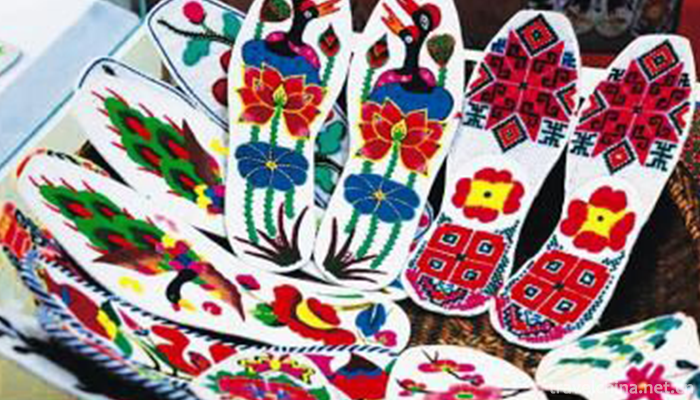
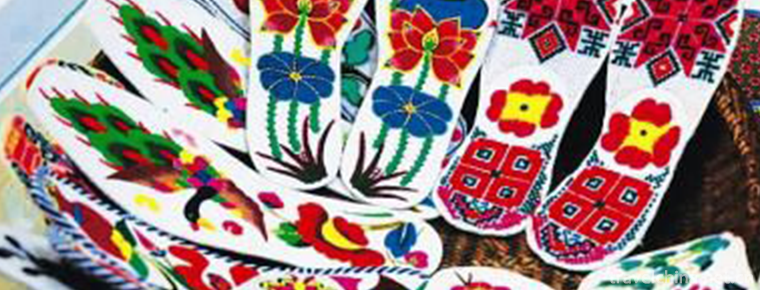
Folk embroidery
-
Ancient town of Guandu
Guandu Town, located in the Southeastern Suburb of Kunming, is one of the famous historical and cultural ancient towns in Kunming. Guandu ancient town gate (big archway) is located in the southeastern
Views: 162 Time 2019-01-13 -
Mogao Grottoes
Mogao Grottoes, commonly known as Thousand Buddha Caves, are located in Dunhuang at the western end of Hexi Corridor. It was built in the pre-Qin period of the Sixteen Kingdoms.
Views: 283 Time 2019-02-07 -
Wu Songgun Taiwan Wetland Forest Park
Wu Song Gu Taiwan Wetland Forest Park: Wu Song Gu Taiwan Wetland Forest Park with a total area of 53.46 hectares is located in the eastern part of Baoshan District
Views: 215 Time 2019-02-22 -
Ear song
"Earsong" is also known as "Decorative Red". In Bai language, "ear" means simple son, and "song" means dance. It originated in the mountainous Bai nationality i
Views: 218 Time 2019-04-28 -
Alpine Hand in Hand Dance
"Hand-in-hand dance" is a kind of self-entertainment dance with the longest history and widespread spread spread among the folk dances of the mountain nationality. During the wedding and fes
Views: 111 Time 2019-04-30 -
Leting drum
Music Pavilion Drum is a representative form of traditional music drum book and drum music in northern China. It is widely spread in eastern Hebei, Beijing, Tianjin and northeastern Liaoning, Jilin, H
Views: 303 Time 2019-05-11 -
Legend of Xishi
Xishi is the first of the four beautiful women in ancient China. The legend about Xishi was born at the end of Spring and Autumn Period, and has been enriched ever since. Xishi legend takes the war be
Views: 193 Time 2019-07-01 -
Yangjiabu woodcut New Year paintings
Yangjiabu wood engraving New Year's picture is a traditional folk engraving which is spread in Weifang City, Shandong Province. Its production method is simple, exquisite craft, bright color, rich con
Views: 139 Time 2019-07-11 -
Yugur Costume
Yugur costume is the traditional costume of Yugur people. Both men and women of Yugur nationality wear long gowns with high collars and large skirts. Men wear red and blue belts with waistknives, sick
Views: 165 Time 2019-07-16 -
Guanyin Pavilion
Stand on Ezhou The city's Xiaodong gate dike overlooks the Yangtze River, and a huge reef stands in the center of the Yangtze River. Long pan Ji " It is also known as "Wanli Changjiang first
Views: 496 Time 2019-09-20 -
Flag dress of Qing Dynasty
In the strong feudal ethical atmosphere of the Qing Dynasty, it is impossible for women to show their curves as modern. In the Qing Dynasty, the cutting system of flag dress always adopted straight line, and the chest, shoulder, waist and buttocks were
Views: 82 Time 2020-12-11 -
Video of Chengdu Giant Panda Base
It has been said to take the children to Chengdu Giant panda base to play, but because the new coronavirus epidemic did not go
Views: 376 Time 2020-12-13
